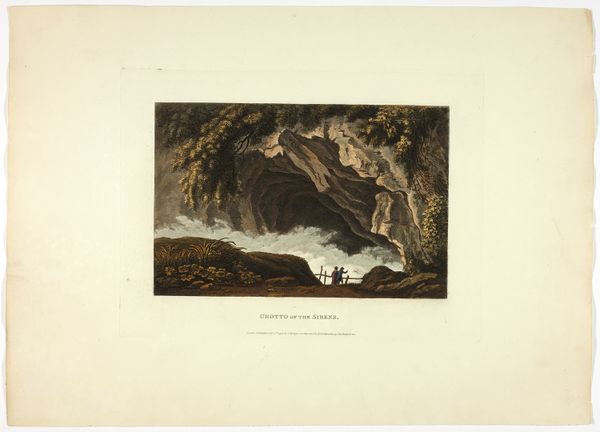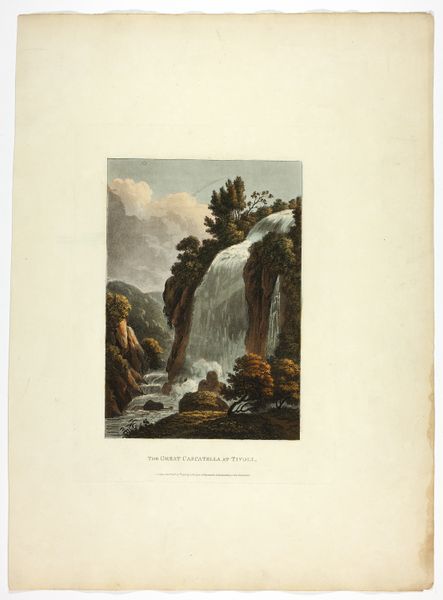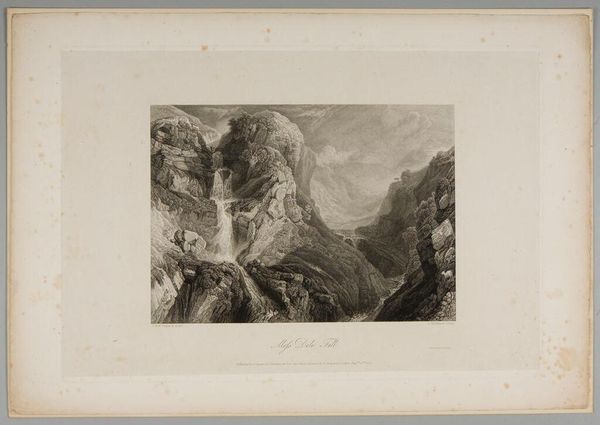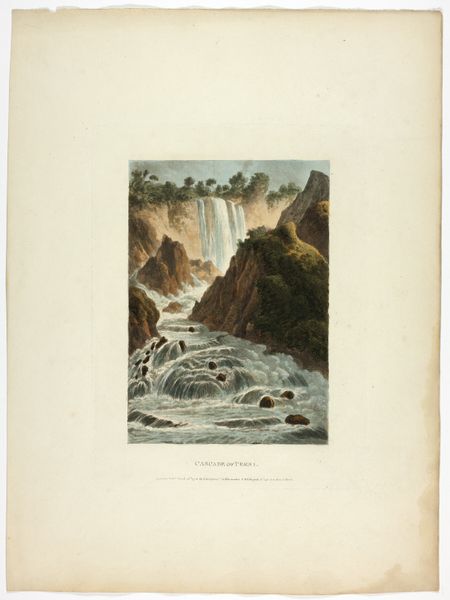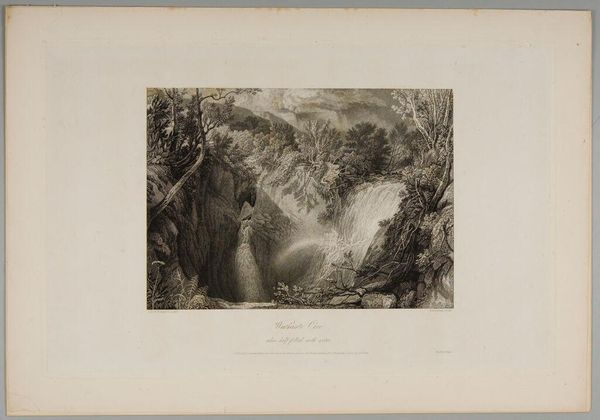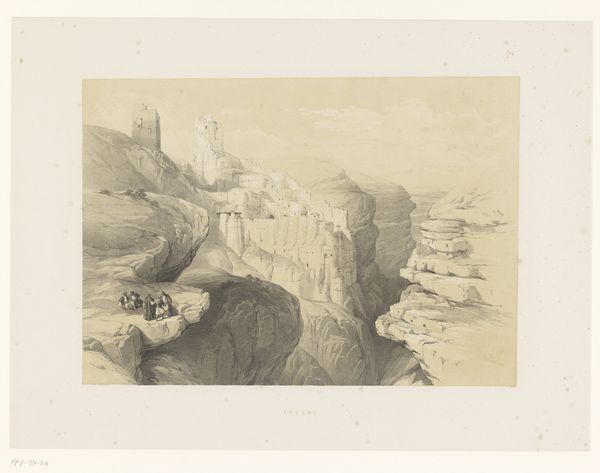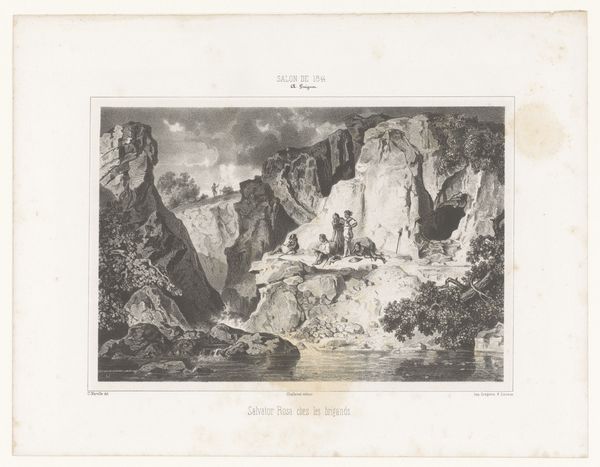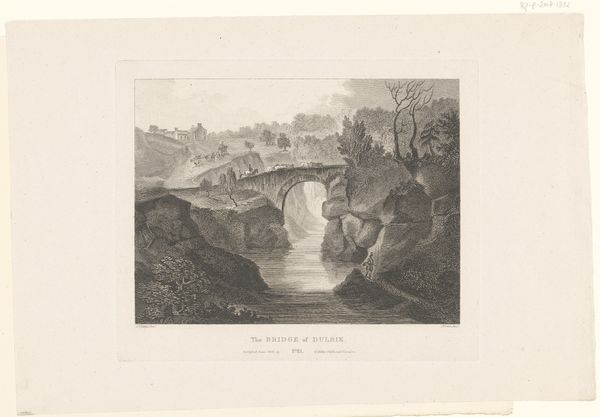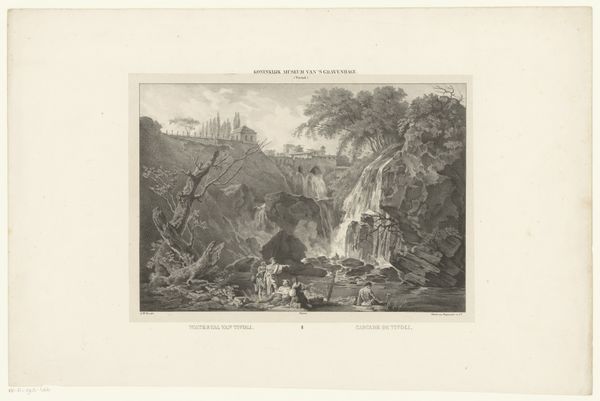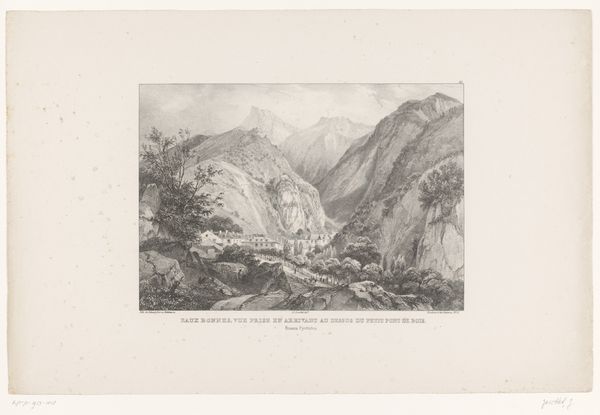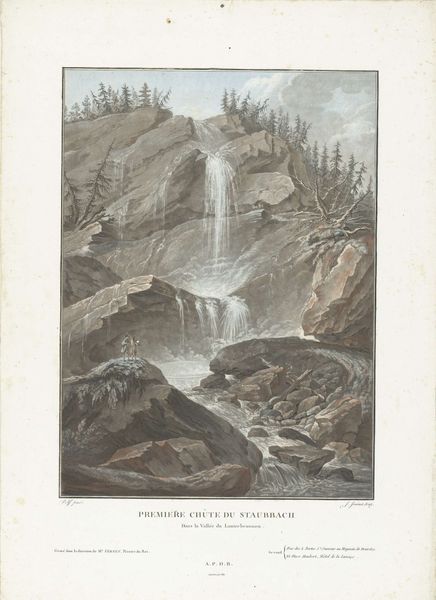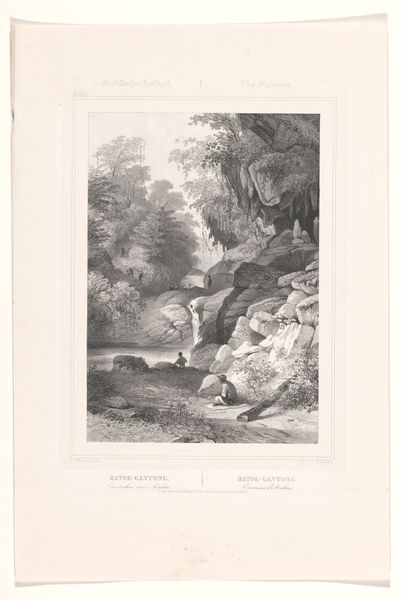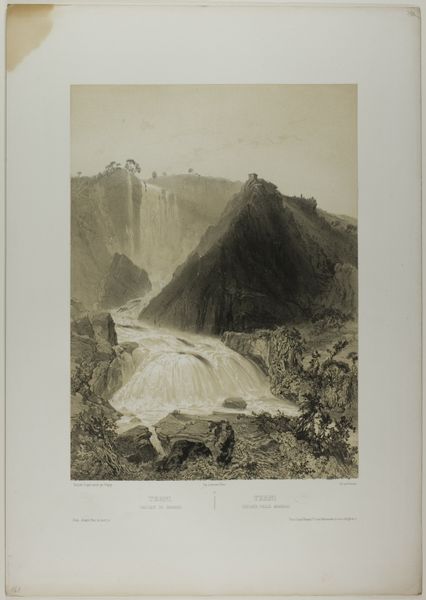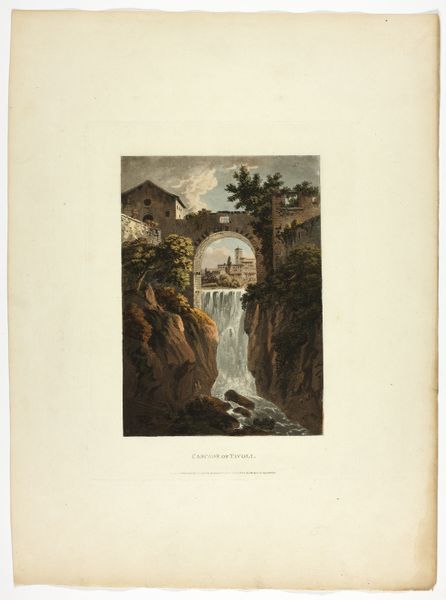
Grotto of Neptune, plate twenty-three from the Ruins of Rome Possibly 1798
0:00
0:00
drawing, print, etching, paper
#
drawing
#
neoclassicism
# print
#
etching
#
landscape
#
paper
Dimensions: 330 × 448 mm (sheet)
Copyright: Public Domain
Curator: What a beautifully composed etching! It immediately draws the eye to the central waterfall. Editor: It does, though its calm belies the turbulence and power dynamics at play within representations of nature during this period. M. Dubourg possibly created this work, "Grotto of Neptune, plate twenty-three from the Ruins of Rome," in 1798. Rome wasn’t just a physical place, it was a loaded concept during this time. Curator: Exactly! The meticulous rendering of the rocks, the cascading water—note how the light is distributed— it's all expertly controlled. The artist uses the conventions of Neoclassical landscape to guide the viewer's experience. Editor: But what about the power dynamics? Rome was at the heart of a sprawling colonial project, this vision of nature naturalizes hierarchy. The two small figures are dwarfed by the landscape, which underscores that idea, but the waterfall isn't just water, it’s representative of resources and, by extension, their control. Curator: An intriguing idea, however I read this as more of a sublime depiction. Look at the scale. It creates a sense of awe, reminding the viewer of nature's overwhelming force and our small place in it. I also wonder about the specific choice of etching; with the title "Ruins of Rome" I'm immediately drawn to a reflection on history. Editor: That romanticization is also key! It papers over very real, material struggles and injustices. Those “ruins” signify a lost empire, but what kind of a nostalgic cultural identity does this artwork attempt to rebuild, and for whom? That historical vision excludes far more people than it includes, based on class, gender, and especially race. Curator: Perhaps, but by focusing so intensely on a politicized historical reading, we lose some of the aesthetic beauty, the pure visual experience of the artwork. Editor: Visual experience, divorced from its inherent politics, runs the risk of idealizing history while doing harm to others! The interplay is far too important to ignore. Curator: I’ll concede that you've made me think more deeply about how cultural context inevitably shapes visual representations of nature. It enriches my viewing experience to understand that an idyllic waterfall isn't just a waterfall. Editor: Likewise, focusing on art's aesthetic features certainly gives viewers new insight into how deeply embedded ideologies persist and take hold through form, texture, color, and light.
Comments
No comments
Be the first to comment and join the conversation on the ultimate creative platform.
